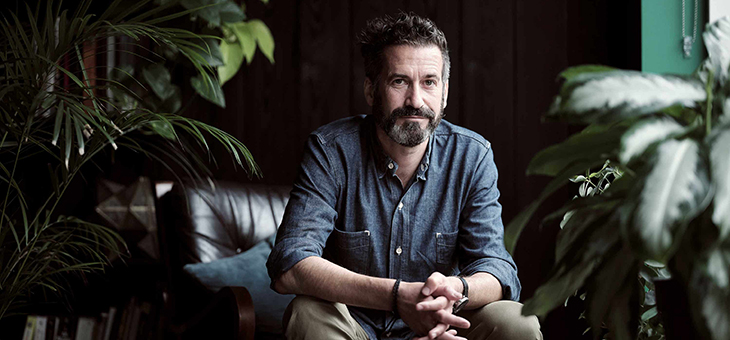Sustainability is at the top of the global agenda right now, and it’s up to each and every one of us to take climate change seriously. And we are. The tides are finally starting to turn, with young people in particular leading the way.
We need to move away from throwaway culture – something sustainable architectural and interior designer Oliver Heath supports wholeheartedly. “It’s interesting to see that sustainability has really moved up the priority list for younger generations,” he says.
“While many may think that fast furniture remains as popular as it once was, durability and longevity are quickly becoming significant considerations when making purchases for our homes, Mr Heath continues. “This shift in consumer mindset is such a positive step for the environment.”
Here is Mr Heath’s advice for being kind to the planet and your home.
1. Ask questions when buying new things for your home
“Ask where the fabrics are coming from, where they’re made, are they organic or fair-trade cotton? Are they made with recycled materials, such as garments from the fashion industry or recycled plastics, or glass or aluminium – which can be recycled over and over again?”
2. Think about whether it’s repairable
“Importantly, make sure the piece you’re buying is good quality and that it’s going to stand the test of time. Is it repairable and reusable? Maybe it’s not necessarily rooted in fashion, because that might be great today, but next year it’s going to feel out of date. So, buying good, solid, well-made classics is a really good investment, because if you move house and the next place is too big or too small, if it’s a good quality piece, you can sell it on.”
Read: Five tips on how to pick top quality used furniture
3. Buy zero-toxin paint
“Make sure you’re decorating using zero toxin paints, so those that have very low VOC (volatile organic compounds) levels,” says Mr Heath. Indoor air is very often more polluted than outdoor air, and a leading cause of that is paints and finishes, which release low level toxic emissions for years after application. Many manufacturers now make low or VOC-free paints, so make sure they’re the ones you opt for when redecorating.
4. Don’t buy flat pack
“Flat-pack furniture loses its value almost immediately. And it’s really hard to repair, because it’s often made out of reconstituted wood and when one piece breaks, it doesn’t have the strength – so once a joint becomes loose, or a fixing starts to wobble, it’s very difficult to secure that and fix it. Buy into well-made solid pieces, which offer you an opportunity to fix, repair and replace items much more readily.”
5. Think about colour and its connection to light and dark
“When you decorate or paint your house, think about colours. So, some rooms can be darker, where you don’t necessarily need lots of light – if you want to create a nice cosy, warm bedroom, for example. But you see trends online, where people have painted a whole house dark blue, which obviously reduces the amount of natural light that’s bounced around the space. And every time you turn a light on, it uses energy and that creates carbon emissions. You may want to think about how you control and reflect light in the living spaces that you use on a daily basis.”
Read: Easy ways to make your home feel lighter and brighter
6. Use natural light
“Make sure your fabrics don’t block light coming in. Pull your curtains back, allowing that light to flood in. It’s a really good way of making the most of natural lighting in the dark winter months.”
7. Manage your energy
“It’s become really important, with rising gas prices, to manage your energy systems. Get a smart meter and monitor how much energy you’re using,” says Mr Heath.
It’s really easy, especially during the colder months of the year to leave the heating on for longer than you actually need. Smart meters can be a real eye-opener and a good way to monitor your electricity consumption generally.
“If you can’t measure it, you can’t reduce it. Don’t walk around in a T-shirt and shorts and then turn the thermostat up – put another layer on instead. And block out draughts, too,’ adds Mr Heath.
Read: Tips to help you fight back against soaring energy bills
8. Look into solar panels
For any home wanting to really become eco-friendly, solar panels are an essential feature. They are a long-term investment, and although there will be an initial layout of money, in the long term you could potentially save more money than you spend.
Some people are lucky enough to find that solar panels make enough electricity for them to go completely off the grid.
How sustainable is your home? Do you have a smart meter or solar panels? Please share what you think of them in the comments section below.
– With PA
If you enjoy our content, don’t keep it to yourself. Share our free eNews with your friends and encourage them to sign up.

